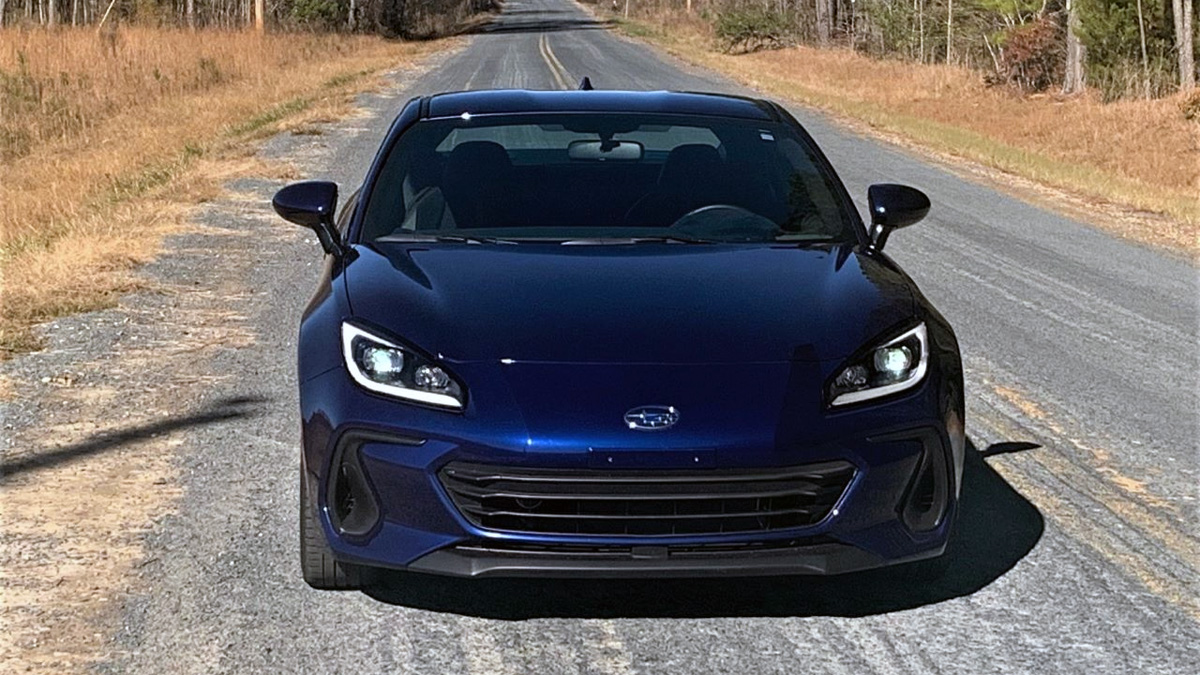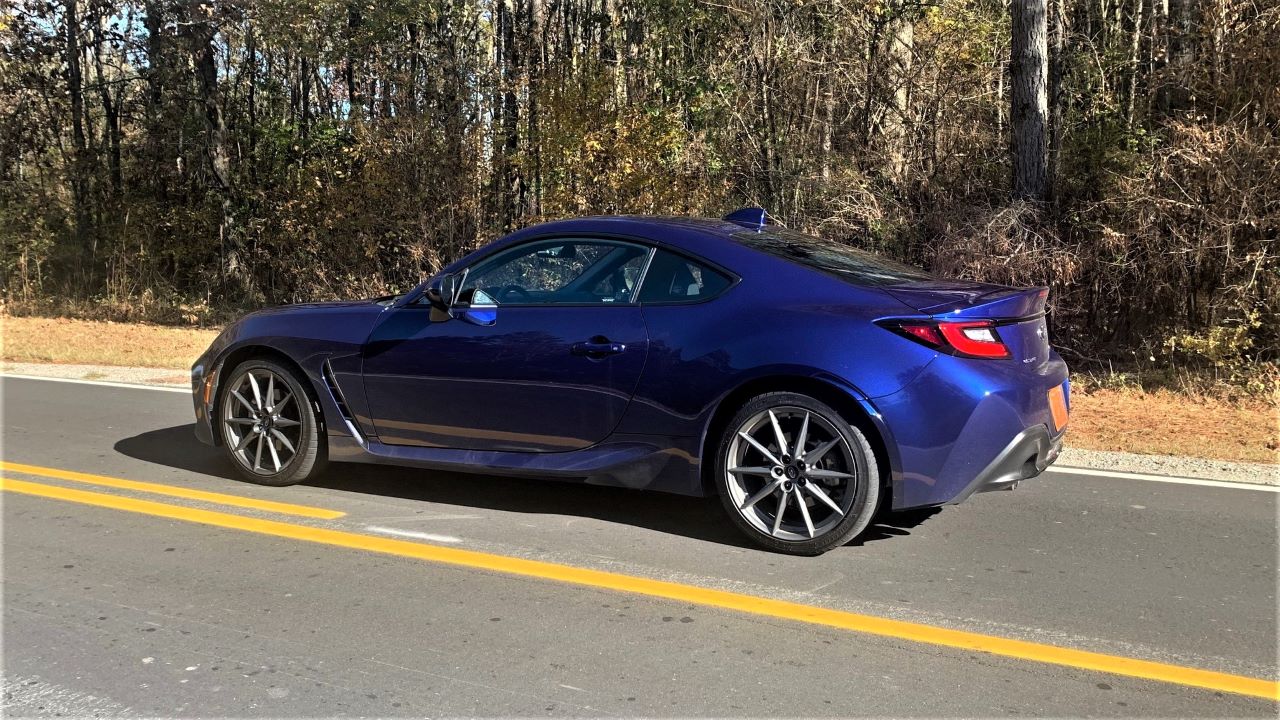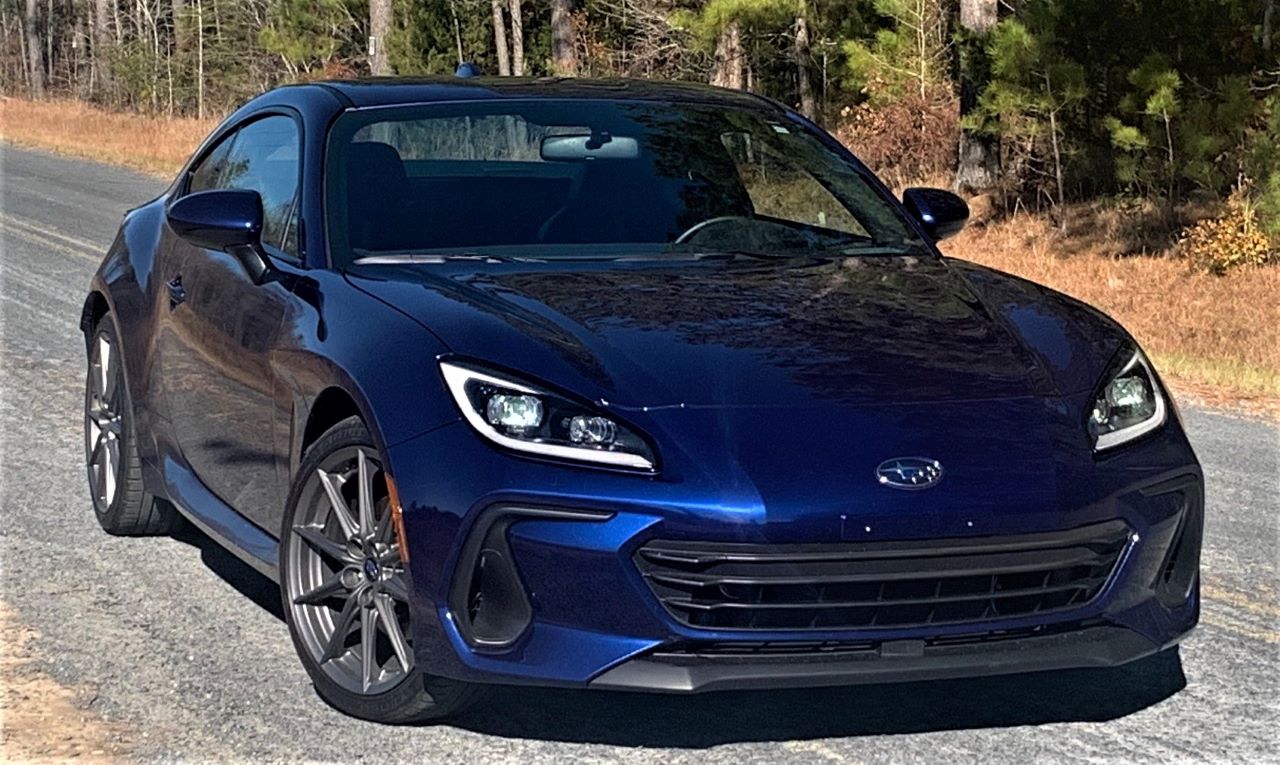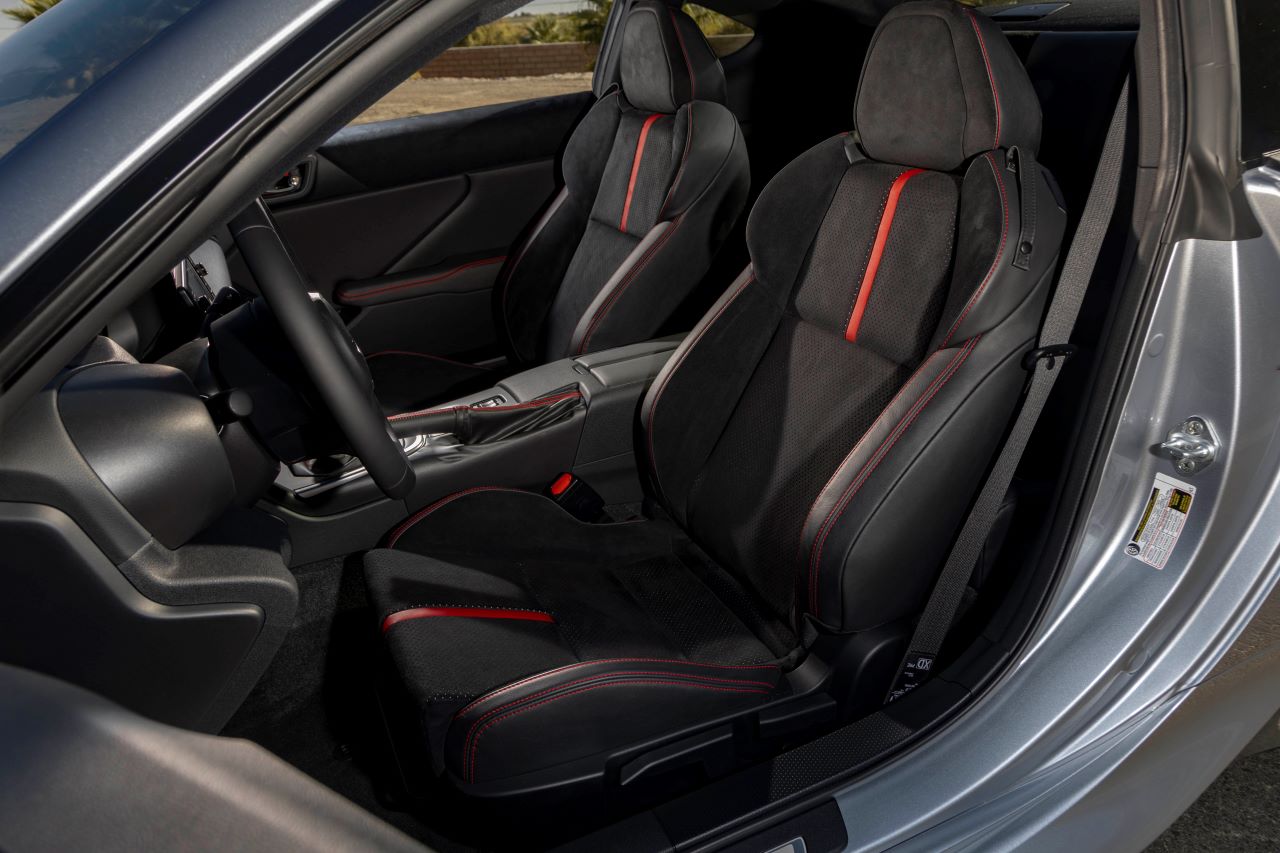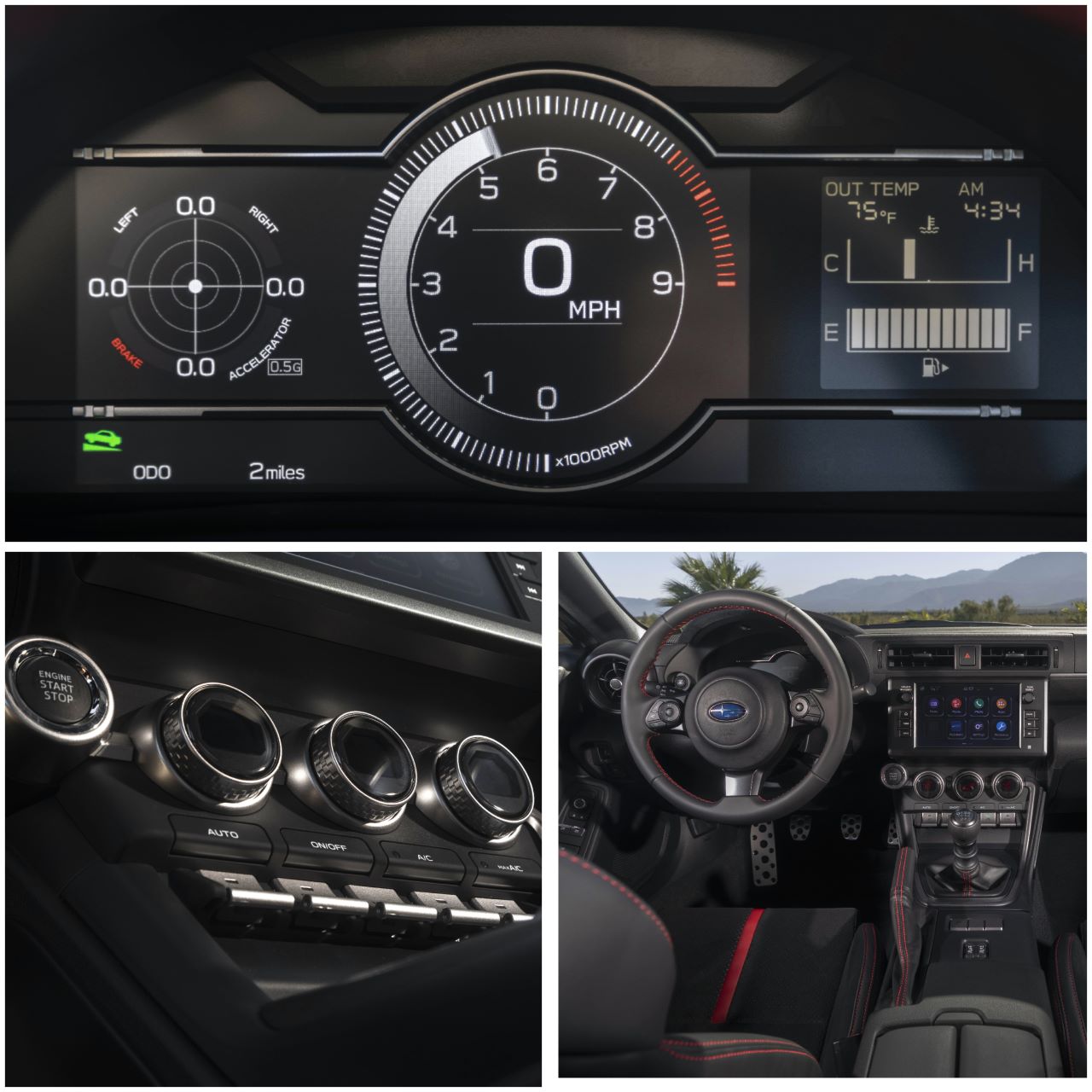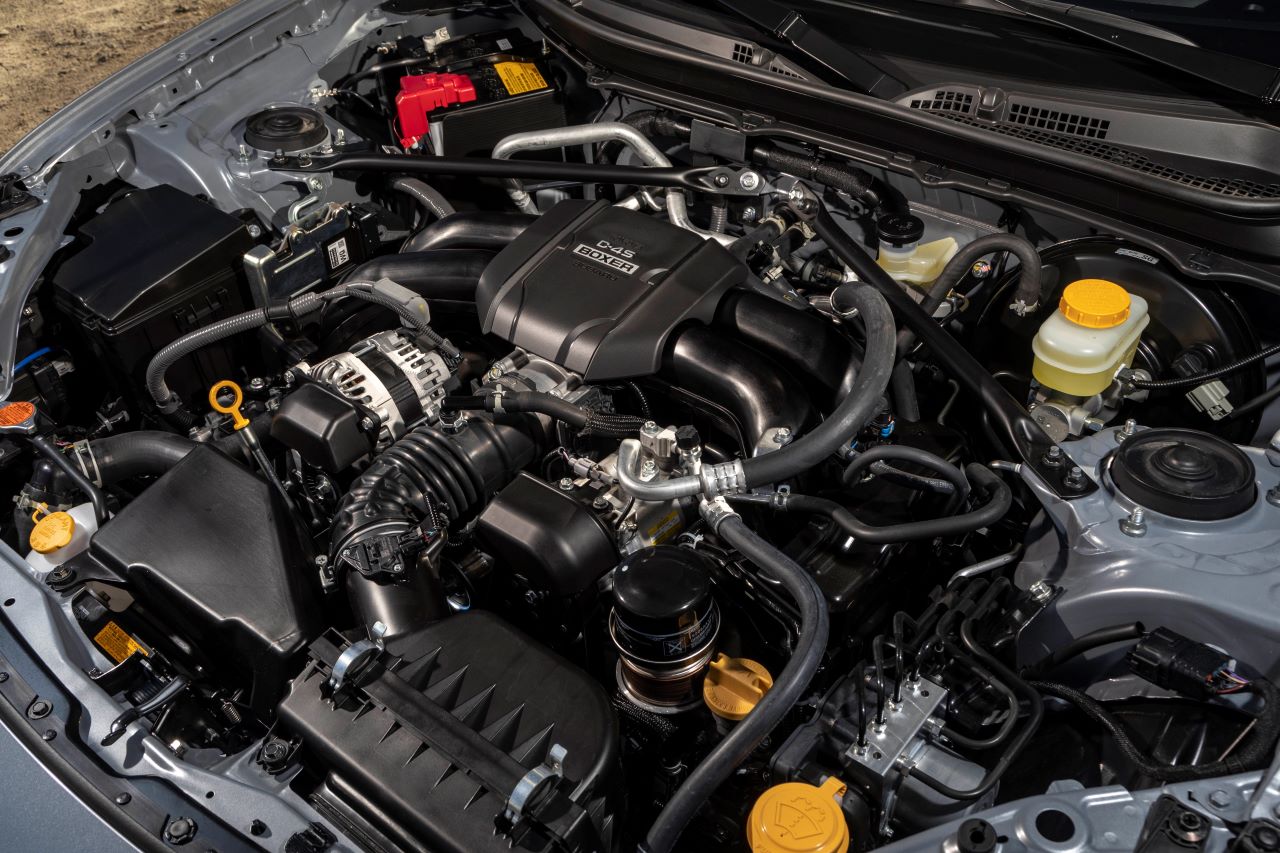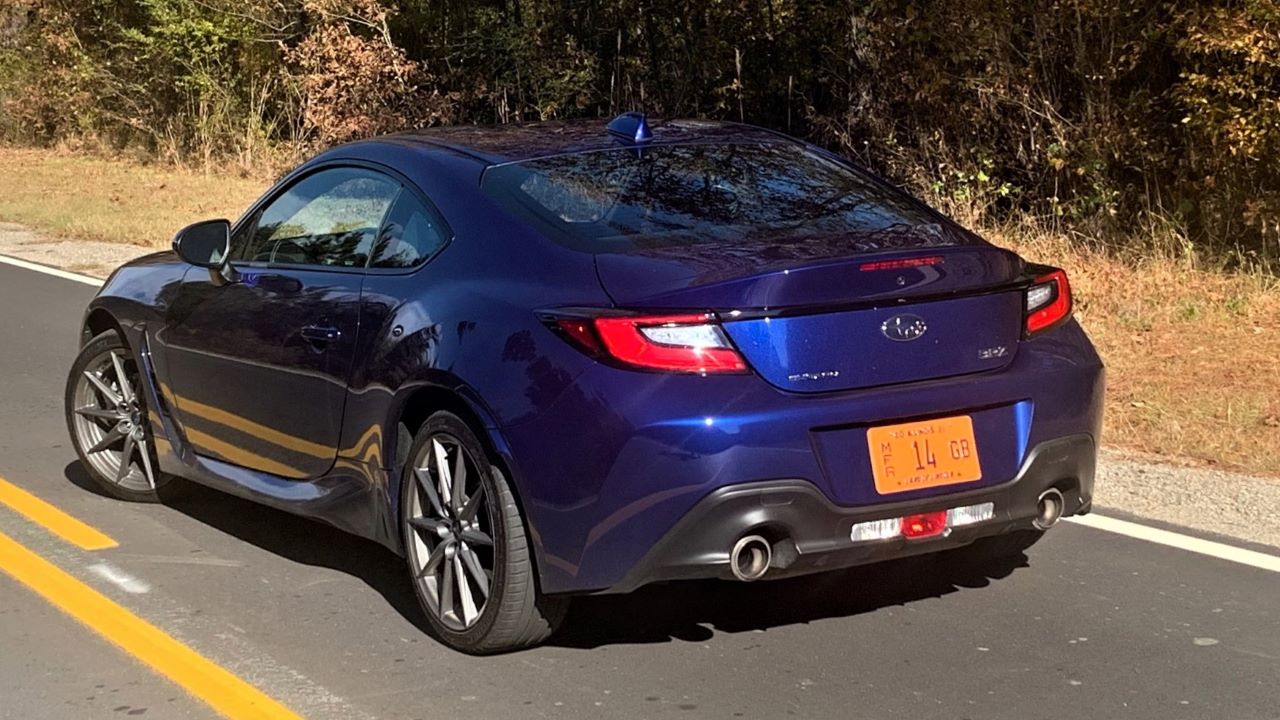A new engine for Subaru’s rear-wheel-drive performer.
The BRZ is the rear-wheel-drive performance coupe from Subaru and a natural complement to the WRX/STI. Together, the duo gives Subaru an uncommon edge in the market, where thrills and chills are always expected.
For 2022, Subaru launches an all-new BRZ, supplying it with a larger and more powerful flat-four engine for enhanced enjoyment.
2022 Subaru BRZ Review
Subaru offers the 2022 BRZ in two trims: Premium ($27,995) and Limited ($30,495), plus a $960 destination charge. A naturally aspirated flat-four (Boxer) engine powers this rear-wheel-drive-only model.
Moreover, shoppers may choose between 6-speed manual or a 6-speed automatic transmission ($1,600).
Exterior Features
There isn’t anything revolutionary about the BRZ’s latest design. It maintains a similar profile to the original with its small-scale sports car layout. The overall look is mildly evocative, although the BRZ doesn’t have the wow factor of the Chevrolet Corvette or Jaguar F-Type.
However, it does have a near-equal sporty look with the 2023 Nissan Z.
But the stance is something we like, especially with the wheels pushed to the corners, the long hood, and the short rear deck. Lots of flair is evident with its pushed-down front grille, distinct sculpting, scoops, air ducts, and a pronounced rear haunch.
The list of standard features includes LED headlights, heated side mirrors, 17-inch alloy wheels, and a trunk spoiler. Choose the Limited trim and Subaru includes steering-responsive (adaptive) headlights and 18-inch alloy wheels.
Both trims come with standard summer high-performance tires. A TORSEN limited-slip differential is included.
Interior Highlights
Inside, the BRZ seats two adults adequately and that’s it. Yes, there are a pair of seats in the rear, but they’re useless. At least for passengers, but not for holding luggage. Indeed, the trunk is small, but when the rear seat folds down, there is ample room to carry a week’s worth of luggage and the one you love.
The cabin doesn’t elicit excitement. Instead, it relies heavily on practicality. Think “minimalism” and your assessment is correct. There are enough hard plastics on hand to codify its budget persona. Nonetheless, some soft-touch materials are also present, which takes the edge off. The interior lines are sedate, but that’s a reflection of this model’s low-cost appeal.
What does enhance the interior are the aluminum pedals, small steering wheel, and supportive sport bucket seats. The gauges sit behind the steering wheel and sit within a casing that share’s the engine’s layout.
The equipment list includes standard full power accessories, cloth seats, a tilt-and-telescopic steering column, and dual-zone automatic climate control. Move up to the Limited trim and Subaru brings in heated front seats and Ultrasuede/leather-trimmed upholstery with rear leather bolsters.
Key Safety Features
Subaru models are typically at the forefront of all matters of safety equipment. However, the BRZ’s safety roster is far from deep, especially concerning standard equipment. Surprisingly, automatic emergency braking is restricted to the Limited trim.
Move up to the Limited model and this one comes with the adaptive headlights, blind-spot monitoring, and rear-cross traffic alert with the manual model. Choose the automatic and this one brings in automatic emergency braking. Further, lane-departure warning, adaptive cruise control, and reverse automatic braking are also present.
Technology Overview
On the tech front, Subaru supplies the 2022 BRZ with an 8-inch touchscreen display, a 7-inch digital gauge cluster, an 8-speaker audio system, satellite radio, and Bluetooth.
Subaru also supplies two USB ports and smartphone integration with Apple CarPlay and Android Auto.
Competitive Set
The Toyota 86 is essentially a clone of the Subaru BRZ. Another model to consider is the Mazda MX-5 Miata and its clone, the Fiat 124 Spyder. For this segment, these are the models to consider.
Move up slightly in size and the Nissan Z comes in. Throw in the Toyota Supra with its turbocharged four-cylinder engine for extra measure. And if you’re truly ambitious, the domestic trio composing the Chevrolet Camaro, Dodge Challenger, and Ford Mustang are large versions of this sports coupe theme.
Drive Impressions
Let’s get one matter out of the way: the Subaru BRZ is an absolute hoot to drive! No, it doesn’t have the performance of a turbo-four or a V6 engine to lean on, but it wins in all areas of drivability.
Subaru skipped the 2021 model year to bring us an all-new BRZ. Owners had been clamoring for more power under the hood and this one delivers. Specifically, the current model features a 2.4-liter naturally aspirated flat-four-cylinder engine.
This one makes 228 horsepower and 184 pound-feet of torque. It replaces the 2.0-liter naturally aspirated engine of the same design that powered the first-generation model. That engine makes 205 horsepower and 156 pound-feet of torque.
If you’re like me, then you may wonder if the power difference is consumed by correspondingly greater weight. Fortunately, it is not. Where the previous model started at 2,798 pounds, the new one registers 2,815 pounds.
The 17-pound difference is almost inconsequential, especially as the power numbers increase by more than 10 percent. Certainly, Subaru could have stuck with the original engine and added a turbo to squeeze out more power, but it is doubtful that anyone will object.
Once again, Subaru utilizes a pair of transmission choices to route power to the rear wheels. A smooth-shifting 6-speed manual gearbox is standard, while a 6-speed automatic transmission is optional.
Our test model happily came with the manual, which demonstrated its synchronous shifting and clean clutch uptake. We found it one of the smoothest shifting gearboxes, bar none. Thus, we would never recommend the automatic as you’ll miss out on the fun.
The BRZ offers decent step-off acceleration, but it won’t thrill in that department. That’s not its mission. Certainly, its passing power is quite good, but the BRZ won’t keep up with anything outside of the Miata range. Again, its mission is absolutely on drivability and that’s where this little sports coupe shines brightest.
Subaru says the BRZ possesses 50-percent greater torsional rigidity than before. That’s due to the expanded use of adhesives instead of welds. Further, a body-mounted stabilizer bar, beefier front frame cross members, and strengthened damper and steering box mounts aid the cause. A modified rear suspension supplies better grip along with improved tires.
We don’t do drifting when we get our test models, but donuts are in order. It’s not our place to wear out the rubber. Instead, we’ll happily push a vehicle like the BRZ to its handling limits. After all, why not?
Benefitting the BRZ tremendously is its low center of gravity, courtesy of its BOXER motor that sits low and near the back of the engine bay. As a result, the BRZ enjoys a near-perfect 50/50 weight distribution. Add in the direct steering, excellent handling, and a composed ride, and the BRZ pegs it.
But that’s not all as the limited-slip differential moves some of the torque to the wheel with the most traction. That move limits the slip on the wheel with the least traction. Play on the twisty roads and the BRZ struts its competence.
The little coupe hangs the curves with ease and moves in and out of corners like a winner. Oh, for the opportunity to have numerous switchbacks available. Where is the Tail of the Dragon when you need it?
Parting Thoughts
We don’t think you can have more fun in any model retailing for under $30,000. Sure, the base price of the Chevy Camaro and Ford Mustang falls within that range, but models seem bloated next to the BRZ. Anyway, the BRZ handles better than Mustang and seems faster on its feet than the standard Camaro.
Give Subaru credit for developing a fun, tossable, “sports car” for the masses. Subaru could have easily abandoned the segment, but it continues with a solid offering. No doubt Toyota put forth some cash to ensure that this would happen, given that the Toyota 86 is a close cousin to the Subaru.
But our money is on the Subaru with its delicious horizontally opposed engine, smooth-shifting manual transmission, and excellent steering and handling characteristics.
See Also – 2022 Subaru BRZ Preview
Photos copyright Auto Trends Magazine. All rights reserved.
- 2024 Mazda CX-50: A Compact SUV with Premium Aspirations - Apr 15, 2024
- 2024 Ford Mustang (Iconic Pony Car Evolves) - Apr 4, 2024
- 2024 Ford Maverick (Looks Like a Truck, Drives Like a Car) - Mar 28, 2024

